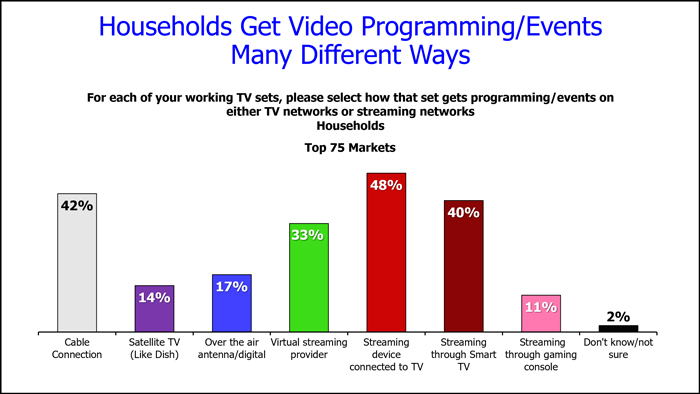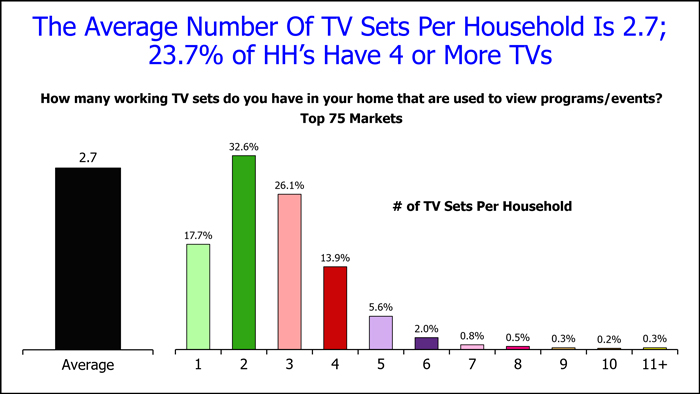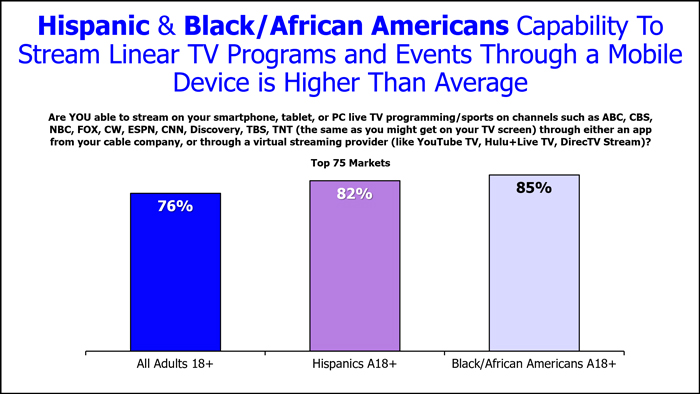TVB Broadcast Members: PowerPoint & webinar available when logged in. To Request Login: Create a TVB member account | Request forgotten password
The way people use media devices continues to evolve over time, but questions remain that have not been entirely addressed by syndicated reports. The 2024 Video Media Devices and Usage Study, conducted by GfK and commissioned by TVB, attempts to better understand media device usage, with the hope that its findings, while interesting, will also help inform and improve the measurement of TV audiences.
The previous study released in 2022 highlighted the propensity of people that view TV with the sound off but listen to it through headphones/earbuds or use closed captioning. Nielsen meters, especially PPM, rely heavily on audio signals to determine program viewing which can result in underestimating an audience that views with the speaker sound off. Though not resolved, it is under serious study by Nielsen and the Media Rating Council.
The 2024 Video Media Devices and Usage Study surveyed 10,000 respondents in the top 75 markets. The study examined key issues including the number of TV sets in a home and how it impacts over-the-air, BBO and virtual MVPD penetration as well as studying differences in BBO and vMVPD penetration versus measurement vendor estimates. It also reported on the capability of respondents to access linear TV content not only on the TV but on mobile devices.
Some Key Findings
- 96% of respondents have a TV in their home and the average number of TV sets per home is 2.7. 24% of all homes have 4+ TV sets.
– The more TV sets there are, the more likely that the household is not an OTA only home, and not a home that only has streaming devices oriented to SVOD, AVOD/FAST.
– The number of TV sets in the household appears to be a significant benchmark in accurately reflecting TV viewing, especially for young adults, households with children, as well as Hispanic, and Black/African Americans. - Households with only streaming devices oriented to SVOD/AVOD (BBO) are more likely in rural areas and smaller size markets.
- Over-the-Air Only Households are also more likely in rural areas while households with virtual streaming providers are more likely in urban areas.
- 76% of households are able to access linear content through a mobile device.
– That number rises to 82% and 85% for Hispanics and Black/African Americans, respectively. - 52% of households that do not have a TV set in their home are able to stream linear TV programs and events through a mobile device.
- 62% of households can access a local broadcast TV app either on their TV or mobile device.
- Most mobile access of linear programming and news content is through a smartphone.
– Smartphone usage to access linear and news content is more prevalent among Hispanics and Black/African Americans.



For more information, please contact Hadassa Gerber, Chief Research Officer, TVB
